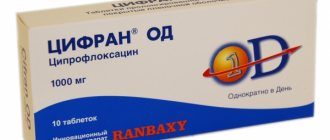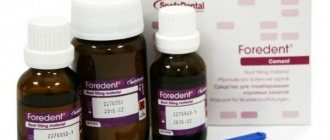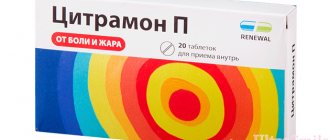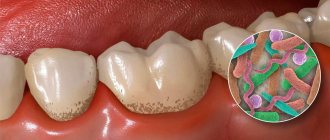Throughout his life, a person often encounters the negative effects of microbes on the body. Bacterial pathogens can settle on the skin, in the gastrointestinal tract, in the genitourinary organs and even on the conjunctiva of the eye. In such a situation, only a strong antibacterial agent will help cope with the infection. Most often, treatment begins with medications based on ciprofloxacin, so doctors often prescribe the antibiotic Tsiprolet to patients. Next we will talk about the beneficial properties of this medication.
Release form
Tsiprolet is produced by many pharmaceutical companies, as it is one of the most popular antibacterial agents. It is produced in the following dosage forms:
- infusion solution - in polyethylene bottles of 100 ml, where the content of ciprofloxacin does not exceed 2 mg per ml;
- tablets - each containing 250 mg or 500 mg of the main active ingredient, they are packaged in blisters of 10 pieces;
- eye drops - sold in bottles with a dropper of 5-10 ml, which contain 3 mg of ciprofloxacin per 1 ml of solution.
According to the instructions for use of Tsiprolet 500, these tablets contain the maximum dose of the active substance. They are used to treat severe bacterial lesions in advanced infections.
Mechanism of action of the drug
Tsiprolet belongs to the group of fluoroquinolones and is an antibacterial drug with a wide range of effects. Its main active ingredient is ciprofloxacin. This chemical compound has the ability to penetrate the DNA structure of the cells that cause the infection, thereby disrupting the vital functions of bacteria, their ability to subsequently reproduce and develop. The result of this influence is the death of harmful microorganisms.
Tsiprolet tablets have a complex effect, effectively destroying microbes that are both at the reproduction stage and in the resting phase. The spectrum of negative effects of this medicine extends to almost all types of gram-positive and gram-negative bacteria, most of the anaerobic pathogens. The instructions for use of Tsiprolet state that its main active component actively eliminates bacterial microflora that are resistant to other antibiotics, for example, the nitrofuran or sulfonamide series. Resistance of microbes to this medicine appears only after a long period of time.
Indications
Ciprofan tablets - what do they help with? This antibiotic is used for the treatment of complicated or uncomplicated bacterial infections that are caused by strains of microorganisms sensitive to ciprofloxacin. The remedy is indicated for the following diseases:
- urinary tract infections;
- bacterial lesions of the gastrointestinal tract;
- sepsis;
- pathologies of ENT organs, especially in case of infection with staphylococcal microflora and gram-negative bacteria, including the Pseudomonas type;
- peritonitis;
- infectious lesions of the respiratory system (for example, pneumonia), if they are caused by Enterobacter, Staphylococcus, Klebsiella, Haemophilus influenzae, Legionella or microbes of the Branhamella, Pseudomonas species;
- inflammatory infectious diseases of the genital organs in men and women (prostatitis, adnexitis);
- infections of the musculoskeletal system and skin;
- some sexually transmitted diseases (gonorrhea);
- bacterial lesions of the eyelid and conjunctiva of the eyes;
- therapy and prevention of infections in patients with low immunity (for example, with neutropenia or after treatment with immunosuppressive drugs).
Comparison of addiction between Ciprolet A and Ciprofloxacin
Like safety, addiction also involves many factors that must be considered when evaluating a drug.
So, the totality of the values of such parameters as “syndrome o” in Ciprolet A is quite similar to the similar values in Ciprofloxacin. Withdrawal syndrome is a pathological condition that occurs after the cessation of intake of addictive or dependent substances into the body. And resistance is understood as initial immunity to a drug; in this it differs from addiction, when immunity to a drug develops over a certain period of time. The presence of resistance can only be stated if an attempt has been made to increase the dose of the drug to the maximum possible. At the same time, Ciprolet A has a fairly low “syndrome” value, just like Ciprofloxacin.
Dosage and methods of application
The antibiotic Tsiprolet is prescribed by a doctor after examining the patient. The dose of the drug is selected based on the type of infection, the severity of the disease and the patient’s condition. The dosage regimen is also influenced by the functional ability of the urinary organs and the person’s body weight (when used in adolescence and childhood).
For the most severe cases of infection and when it is impossible to take the medication in tablet form, Tsiprolet is prescribed in the form of infusion solutions. Then the intravenous infusions of the drug are gradually stopped, and the patient switches to internal administration of the medication. The tablets do not need to be chewed; they simply need to be swallowed whole and washed down with a small amount of water. Take Tsiprolet, regardless of food intake, 500-750 mg twice a day.
The duration of therapy depends on the severity of the pathology and can vary from 3 to 21 days. Usually the doctor prescribes the use of this antibiotic for a period of 7 to 14 days.
Ciprolet tablets
Release form, composition and packaging
White or almost white film-coated tablets, round, biconvex, with a smooth surface on both sides; on the fracture there is a white mass with a slightly yellowish tint.
1 tab.
- ciprofloxacin (as hydrochloride monohydrate) 250 mg
- -“- 500 mg
Excipients: corn starch, microcrystalline cellulose, croscarmellose sodium, magnesium stearate, colloidal silicon, talc, hypromellose, sorbic acid, titanium dioxide, macrogol 6000, polysorbate 80, dimethicone
Clinical and pharmacological group: Antibacterial drug of the fluoroquinolone group
pharmachologic effect
Tsiprolet is an antimicrobial drug from the fluoroquinolone group.
The mechanism of action of ciprofloxacin is associated with the effect on DNA gyrase (topoisomerase) of bacteria, which plays an important role in the reproduction of bacterial DNA. Ciprofloxacin has a rapid bactericidal effect on microorganisms that are both in the dormant and multiplying stages.
The spectrum of action of ciprofloxacin includes the following types of gram(-) and gram(+) microorganisms:
E.coli, Shigella, Salmonella, Citrobacter, Klebsiella, Enterobacter, Serratia, Hafnia, Edwardsiella, Proteus (indole-positive and indole-negative), Providencia, Morganella, Yersinia, Vibrio, Aeromonas, Plesiomonas, Pasteurella, Haemophilus, Campylobacter, Pseudomonas, Legionella, Neisseria , Moraxella, Branhamella, Acinetobacter, Brucella, Staphylococcus, Sreptococcus agalactiae, Listeria, Corynebacterium, Chlamydia.
Ciprofloxacin is effective against bacteria that produce beta-lactamases.
Sensitivity to ciprofloxacin varies among: Gardnerella, Flavobacterium, Alcaligenes, Streptococcus faecalis, Streptococcus pyogenes, Streptococcus pneumonia, Streptococcus viridans, Mycoplasma hominis, Mycobacterium tuberculosis, Mycobacterium fortuitum.
Most often resistant: Streptococcus faecium, Ureaplasma urealyticum, Nocardia asteroides.
Anaerobes, with some exceptions, are moderately sensitive (Peptococcus, Peptostreptococcus) or resistant (Bacteroides). Ciprofloxacin has no effect on Treponema pallidum and fungi.
Resistance to ciprofloxacin develops slowly and gradually; plasmid resistance is absent.
Ciprofloxacin is active against pathogens resistant, for example, to betalactam antibiotics, aminoglycosides or tetracyclines.
Ciprofloxacin does not disrupt the normal intestinal and vaginal microflora.
Pharmacokinetics
Ciprofloxacin is quickly and well absorbed after taking the drug (bioavailability is 70-80%). Maximum concentrations in blood plasma are reached after 60-90 minutes. Volume of distribution - 2-3 l/kg. Binding to plasma proteins is negligible (20-40%). Ciprofloxacin penetrates well into organs and tissues. Approximately 2 hours after ingestion or intravenous administration, it is found in tissues and body fluids in concentrations many times higher than in blood serum.
Ciprofloxacin is excreted from the body mainly unchanged, mainly through the kidneys. The plasma half-life after both oral and intravenous administration is 3 to 5 hours.
Significant amounts of the drug are also excreted in bile and feces, so only significant impairment of renal function leads to a slower elimination.
Indications
Treatment of uncomplicated and complicated infections caused by pathogens sensitive to the drug:
- respiratory tract infections. For outpatient treatment of pneumococcal pneumonia, ciprofloxacin is not a first-line drug, but it is indicated for pneumonia caused, for example, by Klebsiella, Enterobacter, bacteria of the genus Pseudomonas, Haemophilus influenzae, bacteria of the genus Branhamella, Legionella, Staphylococcus;
- infections of the middle ear and paranasal sinuses, especially if they are caused by gram-negative bacteria, including bacteria of the genus Pseudomonas, or staphylococci;
- eye infections
- kidney and urinary tract infections
- skin and soft tissue infections
- bone and joint infections
- infections of the pelvic organs (including adnexitis and prostatitis) gonorrhea gastrointestinal infections
- gallbladder and biliary tract infections
- peritonitis
- sepsis.
Prevention and treatment of infections in patients with reduced immunity (for example, during treatment with immunosuppressants and with neutropenia)
Selective intestinal decontamination during treatment with immunosuppressants.
Dosage regimen
In the absence of special doctor's instructions, the following approximate doses of Tsiprolet are recommended:
Indications for use / Single/daily doses for adults
Uncomplicated lower and upper urinary tract infections / 2x125 mg
Complicated urinary tract infections (depending on severity) / 2x250-500 mg
respiratory tract infections / 2x250-500 mg
Other infections / 2x500 mg
For severe infections, such as recurrent infections in patients with cystic fibrosis, infections of the abdominal cavity, bones and joints caused by Pseudomonas or staphylococci, as well as acute pneumonia caused by Streptococcus pneumoniae, the daily dose should be increased to 1.5 g (2x750 mg) when taken orally, if treatment is not carried out intravenously.
Acute gonorrhea and acute uncomplicated cystitis in women can be treated with a single dose of 250-500 mg.
If the patient, due to the severity of the disease or for other reasons, is not able to take film-coated tablets, it is recommended to begin treatment with Ciprolet for intravenous infusion.
Patients with impaired renal function: If creatinine clearance is less than 20 ml/min (or serum creatinine level is above 3 mg/100 ml), the following is prescribed: 2 times a day half the standard dose or 1 time a day the full standard dose. Patients with liver dysfunction:
No dose adjustment is required.
Patients on peritoneal dialysis:
For peritonitis, ciprofloxacin is prescribed orally at a dose of 0.5 g 4 times a day or the drug is added in the form of a solution for infusion at a dose of 0.05 g 4 times a day per 1 liter of dialysate intraperitoneally.
Duration of use:
The duration of treatment depends on the severity of the disease, clinical course and results of bacteriological examination.
The presence of Tsiprolet in two dosage forms allows you to begin treatment of severe infections intravenously and continue it orally.
It is recommended to continue treatment for at least 3 days after the temperature normalizes or clinical symptoms disappear. The duration of treatment for acute uncomplicated gonorrhea and cystitis is 1 day. For infections of the kidneys, urinary tract and abdominal cavity - up to 7 days. For osteomyelitis, the course of treatment can be up to 2 months. For other infections, the course of treatment is 7-14 days. In patients with reduced immunity, treatment is carried out throughout the entire period of neutropenia.
Mode of application:
Tsiprolet tablets should be swallowed without chewing, with liquid. The drug can be taken regardless of meals. Taking on an empty stomach accelerates the absorption of the active substance.
Side effect
Ciprofloxacin is well tolerated by patients.
The following, usually reversible, side effects may occur during treatment with ciprofloxacin:
From the cardiovascular system: in very rare cases - tachycardia, hot flashes, migraine, fainting.
From the gastrointestinal tract and liver: nausea, vomiting, diarrhea, abdominal pain, flatulence, lack of appetite.
From the nervous system and psyche: dizziness, headache, fatigue, insomnia, agitation, tremor, in very rare cases: peripheral sensitivity disorders, sweating, unsteady gait, seizures, feelings of fear and confusion, nightmares, depression, hallucinations, disorders taste and smell, visual impairment (diplopia, chromatopsia), tinnitus, temporary hearing loss, especially for high-pitched sounds. If these reactions occur, you should immediately discontinue the drug and notify your doctor.
From the hematopoietic system: eosinophilia, leukopenia, thrombocytopenia, very rarely - leukocytosis, thrombocytosis, hemolytic anemia.
Allergic and immunopathological reactions: skin rashes, itching, drug fever, as well as photosensitivity; rarely - Quincke's edema, bronchospasm, arthralgia, very rarely - anaphylactic shock, myalgia, Stevens-Johnson syndrome, Lyell's syndrome, interstitial nephritis, hepatitis.
Adverse reactions and contraindications for use
Tsiprolet very rarely causes allergic reactions. After treatment with this medication, the following side effects most often develop: dyspeptic disorders, nausea and vomiting, skin itching and rash, shortness of breath.
The use of this medicine is contraindicated in the following cases:
- during pregnancy;
- if you are allergic to ciprofloxacin and quinolone drugs;
- in adolescence and childhood;
- during lactation.
Tsiprolet is prescribed with caution to elderly patients. The medication is used only in special cases for people suffering from epilepsy, vascular pathologies, and organic diseases of the brain. Such patients are more likely to experience side effects due to taking the drug, so this antibiotic is indicated for them only in life-threatening situations. In case of allergic reactions and other complaints (for example, joint pain, myalgia), use of the medicine should be discontinued.
Which is better: Tsiprolet or Tsipromed?
It is difficult to determine which drug is best to use on your own. This can only be done by the attending physician, taking into account the characteristics of the patient’s body and the course of the infectious process.
Tsipromed is best used for eye damage from dacteroides, Escherichia coli, staphylococci, Klebsiella, streptococci, spirochetes, legionella and gonococci.
Tsiprolet is recommended to be used if you have:
- keratitis;
- uveitis;
- blepharitis;
- iridocyclitis;
- dacryocystitis;
- endophthalmitis;
- conjunctivitis;
- complicated by the penetration of bacterial flora of a corneal ulcer.
The duration of use, regimen and dosage of the drug used are determined by the attending physician, depending on the severity of the pathological process and the characteristics of the physiological state of the patient’s body.
Special information
Tsiprolet is not effective against streptococci, so it is not prescribed for the treatment of pathologies caused by bacteria of this group. In case of severe infection by anaerobes and staphylococcal microflora, it is better to take the medication in combination with other antibiotics, which will help enhance the therapeutic effect of ciprofloxacin.
The instructions for Tsiprolet tablets indicate that this drug can have an effect on the patient’s body, changing the ability to concentrate. Therefore, it should not be used by transport drivers and persons servicing complex mechanisms and machines. It is unacceptable to use the medication in combination with alcohol. Tsiprolet is available only with a doctor's prescription.
Comparison of the effectiveness of Ciprolet A and Ciprofloxacin
Ciprolet A is more effective than Ciprofloxacin - this means that the ability of the drug substance to provide the maximum possible effect is different.
For example, if the therapeutic effect of Ciprolet A is more pronounced, then it is impossible to achieve this effect with Ciprofloxacin, even in large doses.
Also, the speed of therapy is an indicator of the speed of the therapeutic action; Ciprolet A and Ciprofloxacin are also different, as is bioavailability - the amount of the drug reaching the site of its action in the body. The higher the bioavailability, the less it will be lost during absorption and use by the body.










